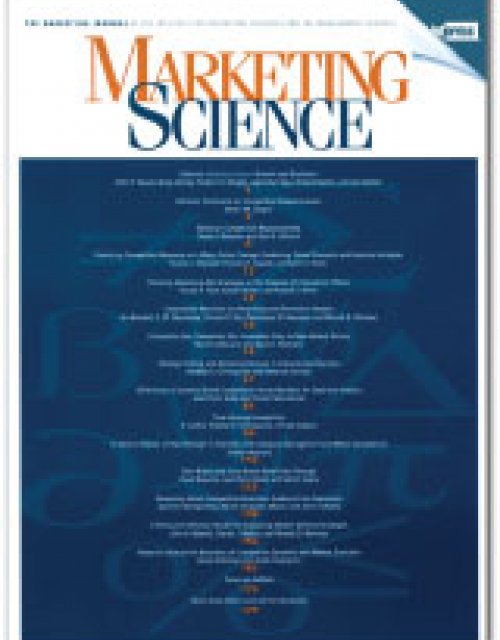Publication records
Subject(s)
Marketing
Keyword(s)
production differentiation, marketing strategy, consumer behavior, pricing, cost of thinking, entry decision, consumer empowerment
Consumers aware of a new benefit will often experience uncertainty about its personal relevance or usage value. This paper shows that the decision to deliberate further to resolve this uncertainty and reach a polarized judgment of personal relevance critically depends on the posted price. In particular, a price above the consumer's initial willingness to pay might be thought provoking and enhance the perception of relevance with a certain probability. This behavioral mechanism is introduced formally and by way of an experiment with reference to the purchase of organic lettuce and fair-trade coffee. Accounting for the effect of price as a stimulus to think, a monopolistic firm should either over price ("transgressive pricing") or under price ("regressive pricing") in comparison to the consumer's willingness to pay. Under certain circumstances, the firm should also empower consumers with means that reduce the effort of deliberation.
© 2007 INFORMS
Volume
26
Journal Pages
118–129
Subject(s)
Product and operations management
Keyword(s)
manufacturing strategy, supply chain, new product development, innovation
Volume
2
Journal Pages
1–20
Subject(s)
Economics, politics and business environment
Secondary Title
Current competition law, vol v
Pages
23–44
ISBN
978–1–905221–06–6
Subject(s)
Strategy and general management
Keyword(s)
Competitive advantage, differentiation strategy, first movers, general management, Internet,; market share, resources, strategy, value innovation, web-based technologies
Launched in early 2005, Zopa is a peer-to-peer online brokerage that couples British residents who want to lend with those who want to borrow. The company represents a new business model in the retail financial services industry, and since Zopa is not technically a bank and does not lend money itself, the capital requirements to run the business are relatively small. Compared to a traditional full service bank Zopa concentrates on only a few steps of the value chain. This case study provides an overview of the financial service industry, especially banks, in the UK in 2006 and how Zopa, a value innovator, has developed a unique position in the market through an innovative business model. Rich data especially on banking trends are given. Additional data on key players in the industry are supplied. This data will enable students to develop a good understanding of the elements of a value innovation and how technologies have the potential to shake up an established industry structure and its key players. A focus is on the concept of value innovation and sustainable competitive advantage. The case can also be used to address the topic of how incumbent firms should respond to innovative new business models.
The case provides an overview of the financial service industry in the UK in 2006 and how Zopa, a value innovator, has developed a unique position in the market through an innovative business model. Rich data especially on banking trends are given. Additional data on key players in the industry are supplied. This data will enable students to develop a good understanding of the elements of a value innovation and how technologies have the potential to shake up an established industry structure and its key players. A focus is on the concept of value innovation and sustainable competitive advantage.
| buy now | buy now | buy now |
Subject(s)
Human resources management/organizational behavior
Keyword(s)
Executive education, leadership development, coaching, management science, job satisfaction, education, management retreats, organization, organizational behavior, organizational effectiveness
Volume
1
ISSN (Online)
2151-6561
ISSN (Print)
0065-0668
Subject(s)
Marketing
Keyword(s)
Befragung, Virtuelle Informationsbörse, Entscheidungsproblem, Prognose, Wissen, Informationsmarkt, Informationssammlung
Volume
60
Journal Pages
321–334
Subject(s)
Economics, politics and business environment
Keyword(s)
competition policy, effects-based approach, antitrust, state aids, mergers
Volume
29
Journal Pages
281–304
Subject(s)
Finance, accounting and corporate governance
Secondary Title
Handelsblatt Wirtschaftslexikon, Band 3
Pages
1524–1531
ISBN
000–379–1026003
Subject(s)
Economics, politics and business environment
Keyword(s)
competition policy
This paper allows for endogenous costs in the estimation of price cost margins. In particular, we estimate price-cost margins when firms bargain over wages. We extent the standard two-equation set-up (demand and first-order condition in the product market) to include a third equation, which is derived from bargaining over wages. In this way, price-cost margins are determined by wages and vice versa. We implement the model using data for eight European airlines from 1976-1994, and show that the treatment of endogenous costs has important implications for the measurement of price-cost margins and the assessment of market power. Our main result is that observed prices in Europe are virtually identical to monopoly prices, even though observed margins are consistent with Nash behavior. Apparently, costs had been inflated to the point that the European consumers were faced with a de facto monopoly prices.
© Blackwell Publishing Ltd. 2006
Volume
54
Journal Pages
351–368
Subject(s)
Strategy and general management
Keyword(s)
competitive strategy, competitive advantage, madonna, customer analysis
Looking outside the confines of the usual business sphere, we find that Madonna is a born entrepreneur.Jamie Anderson and Martin Kupp reveal the business side of an entertainment legend.
© 2006 The Author Journal compilation © 2006 London Business School
Volume
17
Journal Pages
26–31
